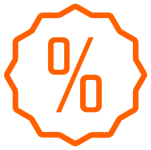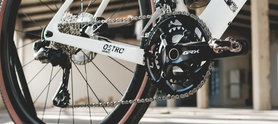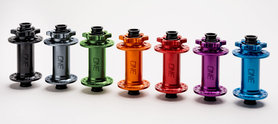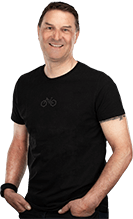An unconventional design and the "holy grail of rear suspension" are the hallmarks of EVIL Bikes, the US manufacturer of high-end carbon frames for MTBs. The heart of the bikes is the Delta-Link linkage driven single pivot rear suspension system designed by suspension guru Dave Weagle. The changed transmission ratio of the excellently processed frame results in a more progressive curve. This ensures optimum responsiveness and offers the possibility of installing a coil rear shock. Nevertheless, the rear triangle also harmonizes perfectly with an air shock. During development, each model is regarded as a complete system consisting of damper, area of application and geometry in order to achieve the optimum balance between acceleration and braking performance with the Delta-Link. The central element of the Delta system, the Flip Chip, enables the rider to adjust the steering angle and bottom bracket height to their preferences or the terrain.
Unfortunately we no longer carry this brand in our range, but you can find good alternatives under our full suspension mtb frames section.
EVIL Bikes - or what it is "Shred Marketing"
The curly hair is his trademark. And a VW T3 bus with syncro drive. We're talking about Rob Heran. Rob has been a team rider with EVIL Bikes since 2017. And incidentally, he is also responsible for the distribution of the US cult brand in Germany, Austria and Switzerland. Rob is not the only mountain bike professional at EVIL who is much more than "just" an athlete. We visited him in his showroom to get some background information about the brand.
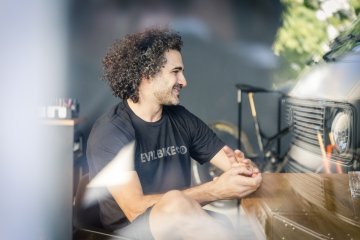
There are not many brands in the bike industry that are distributed by active professionals. Why is EVIL doing this?
Rob: It make sense, because as a team rider you're used to communicating with customers anyway. In the USA, many top-class riders are under contract to the outside world as athletes. Internally they work as engineers, others in sales, are active in service. This makes the brand even more authentic, because the employees know a lot about the company and the products.
This approach requires a different selection of riders. The rider must not only fit the image of the brand, but their abilities off the bike need to be there too...
Rob: Everyone has - besides the athlete role - a central task in business. This challenges you as a rider, but also gives you a look at your career after your career. Or to put it another way: you remain a mountain bike professional, but you also set new goals for yourself.
Let me guess: That was the same for you?
Rob: Sure. But there was also a definite moment when that grabbed me: I rode an EVIL on behalf of my sponsor for test purposes and saw how damn well a bike can work. That was a totally new experience for me. When my contract expired and I was able to go in different directions, it was clear to me: I want to be on an EVIL in the future.
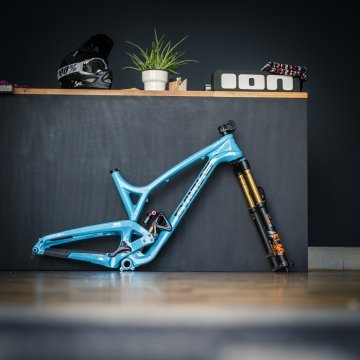
And this also resulted in the constellation in which you now play the dual role of athlete and salesman, right?
Rob: That was just a huge opportunity: I can do more than just ride a bike. That's why I wanted to be fully involved. And so I approached EVIL with the suggestion to bring together the sporting and the sales side in the German-speaking area. For me, this was the worst short-term financial option I had at the time. But it was the most honest.
EVIL Bikes! The name sounds, shall we say, dangerous. What you're saying though doesn’t sound that way at all. How much evil is in EVIL?
Rob: Dave Weagle, the mastermind of the EVIL Delta Link system rear-end, rode Downhill races as an amateur. And because he wasn't satisfied with the performance of other rear suspensions, even though rear shocks worked very well, he developed something himself. Just for himself and his buddies, actually. Among others also a certain Kevin Walsh. Kevin Walsh was and is strongly anchored in the Seattle music scene. From this punk and metal scene comes all the inspiration for the name, the image. On top of that there is a large amount of humour. That's why it's not to be taken too seriously.
When it comes to the rear-end, EVIL is to be taken absolutely seriously....
Rob: Yes, of course. But that's what the brand is all about: on the one hand, they don't take themselves too seriously. On the other hand, they have a product that has to be taken absolutely seriously. And that's why they give off a certain irony. Because they didn't want to create the brand in order to earn money with it. They just wanted to roam the woods with their boys and have a good time on the bike.
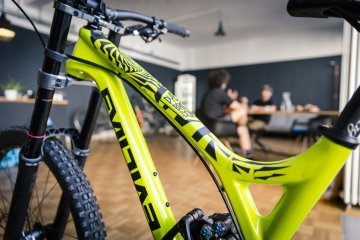
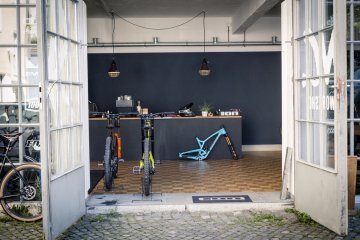
Then how did the brand come to be founded?
Rob: When Weagle and Walsh got together and built the first Downhill bike, Stevie Smith was looking for sponsors for the DH World Cup. Because Dave was already considered the god of suspension at that time, Stevie somehow got on this big bike and was riding at an abnormally fast pace. From then on it was clear: Chainsaw (Stevie Smith's nickname) and his team wanted to ride this bike in the World Cup. And nothing else. But Weagle and Walsh had no ambition to build a product for the masses. So they just set up a few bikes and sent them around the world for the World Cup races. And then came the first World Cup victories... Then the duo Weagle/Walsh said: 'Okay, now let's do it!' That's how EVIL came into being.
A nice success story so far. Did it go on like this without issue?
Rob: The bike was a milestone in development at that time. But it was really complicated to get the stability and the weight to a reasonable ratio. The radical riding style that was possible with the bikes pushed the frames to their limits in terms of stability. And beyond that. There were problems in series production. EVIL was not prepared for this, because originally that was not the plan. It's no secret. Almost at the same time, the trench warfare within the bicycle industry also began, because the supposed underdog had suddenly and brutally sneaked to the top. These were bitter setbacks.
Then began the era of carbon...
Rob: After realising that the production capacity of the frame manufacturers was not available for a small brand, the guys at EVIL discovered carbon. The first Downhill bike made of carbon was technically and optically, once again, a milestone. If you look at the geometry of the bicycle from back then, it would still be up to date today. Just on 26 inch wheels.
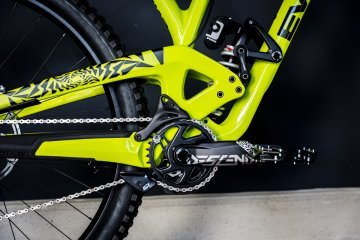

The EVIL Bikes Delta Link system immediately catches the eye. But above all it is functional. Can you describe why?
Rob: The Delta Link system was developed to work with steel coil rear shocks. They are inherently linear in the characteristic curve. To avoid bottoming out, the end progression must therefore come via the rear-end and its kinematics. The Delta Link, however, adds a second progression stage, namely at the beginning of the suspension travel (at 30-35%). This makes the rear triangle very sensitive, but the bike does not drop away immediately. As a rider, you can push the bike around, e.g. when accelerating out of a corner or during a bunny hop, and it remains incredibly agile. Here it feels as if you are sitting on a bike with much less travel, but more sprightliness. When it gets steeper, the speed increases, more travel is used, then the characteristic curve flattens and the bike gets into the middle travel range. Everything between 35 and 85-90%. This is the Holy Grail of the development. Every engineer who develops a modern full suspension bike wants to get here.
Why is the medium travel range so important?
Rob: A bike has to build up maximum grip in this range. Especially when the speeds are higher, it has to be extremely smooth and give the rider a lot of confidence. At the same time, it does not sink in it's travel. The EVIL system does this extremely well and therefore feels good even after using more travel. The bike already has tons of traction when only using 35% of its’ travel. This makes better use of the medium travel range and the final progression starts later, at 85-90%. With other bikes, a strong final progression starts perhaps around 70%, because the travel is not used efficiently before that.
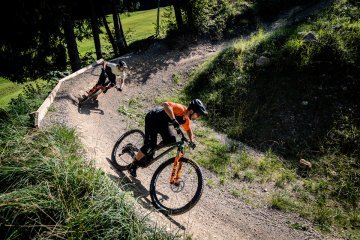
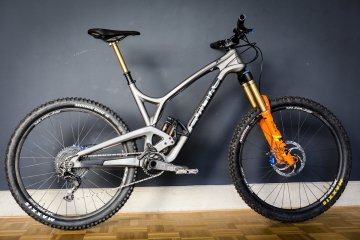
Is that also noticeable uphill?
Rob: Absolutely, but less with progression levels, and much more with chain-pull. The biggest disadvantage of a single pivot rear-end, pedal bob, is no longer an issue thanks to the 1x drivetrains... And with the combination of these two things it's pretty awesome when I come out of a bumpy corner and have to pedal out: Firstly, the bike does not sink in the travel, but remains high to maintain traction. Secondly, the chain pulls the rear end apart, I don't need a pedal setting and the response remains very sensitive uphill. The anti-squat gave me a real ‘Wow’ moment: Instead of getting out of the saddle uphill to lift the bike over obstacles with a certain momentum, I just stay seated.
That's a lot of information that you have to explain to person interested in EVIL. How does it that into EVIL's reputation as a non-marketing company that prefers to focus on building the sickest bikes?
Rob: What we enjoy most as a brand is being in direct contact with people. Just get them on a bike. And everyone, really everyone who comes to our stand, rents a bike, goes for a ride and comes back with a giant grin. We can explain everything to the people down to the smallest detail, but first and foremost what the people on the bike should experience is 'Damn, that doesn't feel like a 120 mm bike, it feels like a 140 mm of travel' That's our marketing. We are a Shred Marketing company.
